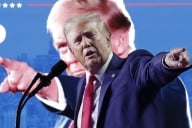You have /5 articles left.
Sign up for a free account or log in.
Like many major American universities, the University of Minnesota has on multiple occasions been forced to confront the tension that exists between its grand (if not grandiose) academic ambitions and its desire to compete at the highest levels of big-time college sports. That tension, which results in it admitting significant numbers of athletes whom it considers academically at risk, has contributed to a fair share of problems at Minnesota over the years, including a much-publicized men's basketball scandal in the late 1990s in which sports officials engaged in academic fraud to try to help athletes stay eligible to compete.
The stakes for athletes' academic failure are on the rise nationally, what with changes in National Collegiate Athletic Association rules that threaten penalties, including the loss of scholarships, against Division I colleges that fail to keep a significant proportion of their athletes on track to graduation.
That reality, among other factors, prompted Minnesota officials to appoint a faculty committee last year to examine the steps that the university might take to better ensure the academic success of its athletes. And the panel's report, released last week, shows an institution wrestling with issues that affect many college sports programs -- and suggesting some steps that could raise red flags, given the pressure on colleges to keep athletes academically eligible.
Most notably, the report recommends that the university make it possible for more athletes to major in sports-related academic programs, arguing that their data show that athletes (like other students) are more likely to thrive academically if they are in academic programs that relate to their personal interests. University officials insist that they have no intention of lowering academic standards in such programs to accommodate the athletes, but faculty leaders acknowledge that some risk exists, and that they'll be closely watching what happens next.
Provost Tom Sullivan created Minnesota's Academic Support and Performance for Student-Athletes Task Force as the last of 35 such committees established as part of the university's ambitious plan to become one of the top three public research institutions in the world. That goal, along with the university's history of sports-related problems and the NCAA's climbing expectations for athletes' classroom performance, made it essential for Minnesota to look hard, Sullivan says, at "how can we assure ourselves that these students have a realistic chance of succeeding and graduating?"
The report that emerged from the faculty panel offers an unusually frank assessment of the situation as it now exists in Minnesota's athletics program. The committee found that about 30 percent of all Gopher athletes were classified as "at risk," meaning that they were in the bottom half of their high-school classes or scored lower than 20 on the ACT or 940 on the SAT. Nearly 4 in 10 male athletes were declared at risk, as were about two-thirds of black athletes, the committee found. ( An article in the Minneapolis Star-Tribune last year found that Minnesota had admitted more athletes with very low test scores than did its peers in the Big Ten Conference.)
Perry H. Leo, a professor of aerospace engineering and mechanics who co-chaired the faculty panel with Mary Jo Kane, director of the school of kinesiology, says that the committee was asked to focus its attention not on whether it was wise or appropriate for the university to admit that many at-risk athletes ("We all want to let in fewer at-risk athletes," he says, but "we have faith in the admissions process"), but on what happens to them once they're there. Using a statistical model, the faculty group closely examine two groups of athletes: "underachievers" (athletes who were predicted to succeed academically based on their credentials, but did not) and "overachievers" (those who were predicted not to graduate or succeed, but did).
Its review of their transcripts led them to make several recommendations about "when, where and how do we intervene with at-risk student-athletes?" to ensure their success. The ideas included the possibility of creating an "intensive and comprehensive summer bridge program" to help acclimate incoming athletes to college, and working harder to get former athletes who left the institution within reach of graduating to return to finish their degrees.
But it was one other recommendation -- that the university "increase access to academic programs that are relevant to student-athletes as a way to increase their interest and motivation, leading to better academic outcomes" -- that Leo says he knew would be likeliest to raise eyebrows. In the abstract, the panel's logic makes sense: "In short, students are more likely to succeed if they are engaged in academic fields of study they find interesting and motivating and if they see a relevant link to their future careers."
In the context of big-time sports, however, such talk tends to create worries. Athletes are already known to cluster in certain majors rather than others; Minnesota's own report, for example, finds that "overachieving" athletes were generally found in six majors (business and marketing education, kinesiology, sports studies, family social studies, communication studies, and the university's flexible interdisciplinary program). And one of the concerns expressed about the NCAA's new system for monitoring athletes' academic progress is that it could increase the pressure on athletes and institutions to find comfortable, safe majors that make it easier for athletes to move through college. A controversy in Auburn University's sociology department last year exacerbated those fears.
But Leo says that members of the faculty panel were persuaded that the university should consider expanding the size of some of the majors athletes are most interested in, "after appropriate consultation with relevant deans, department chairs and faculty," as the panel wrote in its report. "If business and marketing education has spots for 20 students and there are 30 students or 40 students who want to get into that, we should consider it. It's about supply and demand," Leo says.
A "very tricky question," Leo says, is whether the university should consider easing grade point average requirements that certain majors have, which the report notes can keep some underperforming students out of some programs. "It makes me glad not to be a president or provost," he says.
The man who is Minnesota's provost, Tom Sullivan, says flatly that the university has no intention of easing academic requirements to let more athletes in. "I do not see this question, either explicitly or implicitly, as being about lowering standards," he says. "It's a resource question. "If we see high demand where good students who are interested in a subject are being turned away, say in a program like sports journalism, does that mean they need more faculty?"
Sullivan acknowledges that it's conceivable that entrance requirements for some majors could change down the road if faculty decide that's appropriate, but that would only be if expanding the program eased the supply and demand crunch. "We may have programs with a 3.5 GPA requirement now because of high demand. If you expand those programs with new resources," he says, that GPA "may come down. But it's not coming down to let special admits in -- it comes down because you commit resources that change the dynamics."
Peter P. Roby, director of Northeastern University's Center for the Study of Sport in Society, credits Minnesota for directly confronting the question of athletes' academic success. "They seem to be trying to seriously ask themselves, what can we do to increase the chances that people graduate from college?" he says. And while concerns about the possibility of compromised standards are understandable, given Minnesota's history of sports troubles and that of other big-time programs, "you have to have some faith that you've got real academics involved with these recommendations who are serious and committed faculty people, who are not going to allow the university's reputation to take a hit just to satisfy athletics."
Roby says he is troubled, though, by the university's apparent decision to draw a line at the admissions process in its review of athletes' academic status, at least in this report. "Not everybody who wants to play at the University of Minnesota may be able to do the work," he says, so no matter how hard a university pushes to bolster its athletes once they're admitted, "it may be that people need more preparation and help than you can provide."
Faculty leaders at Minnesota express confidence, based in large part on their faith in the leaders of the faculty panel, that Minnesota will not try to ease the way for athletes by easing academic standards. But that doesn't mean they won't be watching closely, says Carol Chomsky, a professor of law who heads the universitywide Faculty Consultative Committee.
As administrators and professors move to carry out the panel's recommendations, she says, "antenna will be up and there will be questions asked, to ensure that what's done is consistent with academic excellence and priorities, and not somehow for the sake of accommodating athletics."





